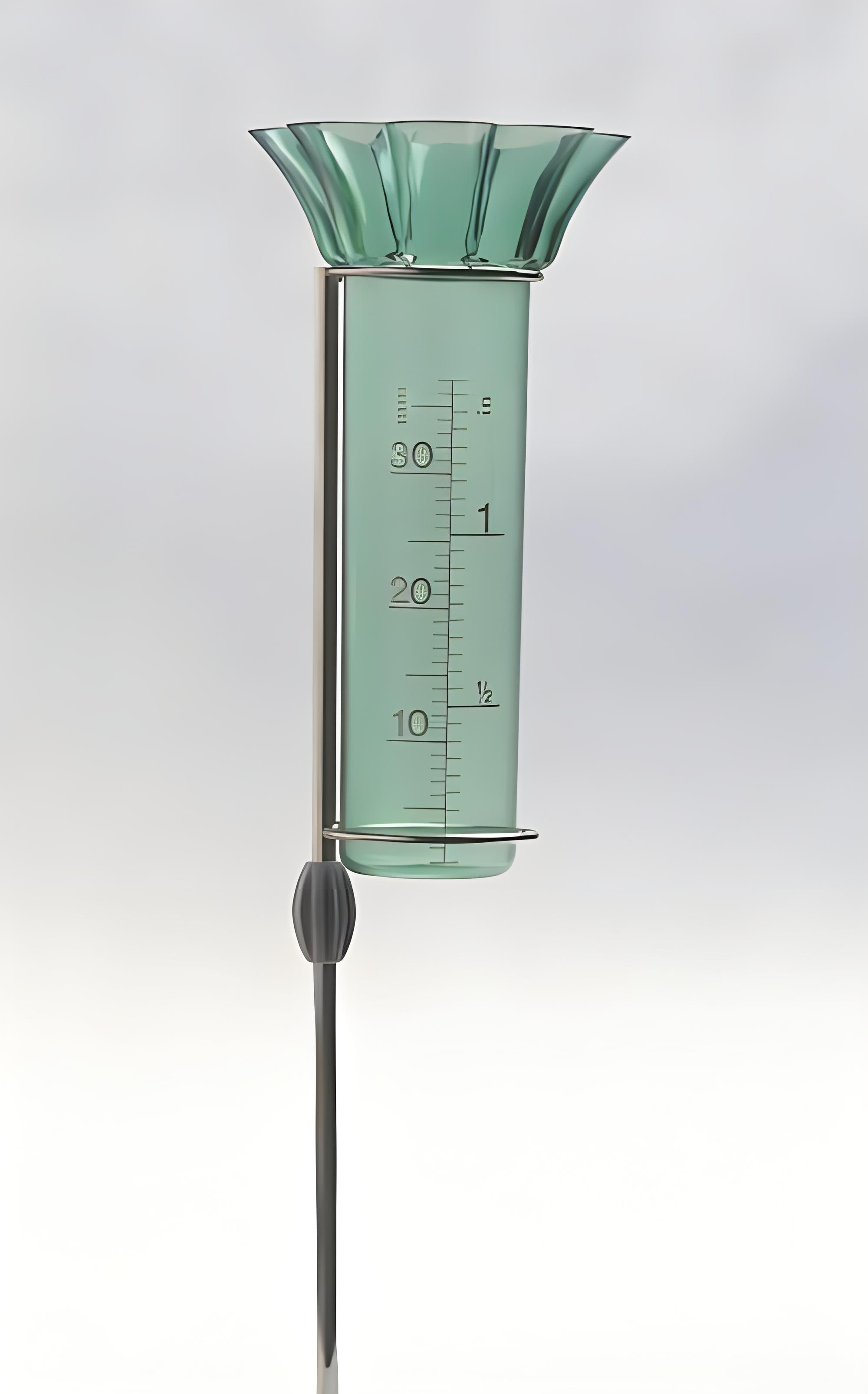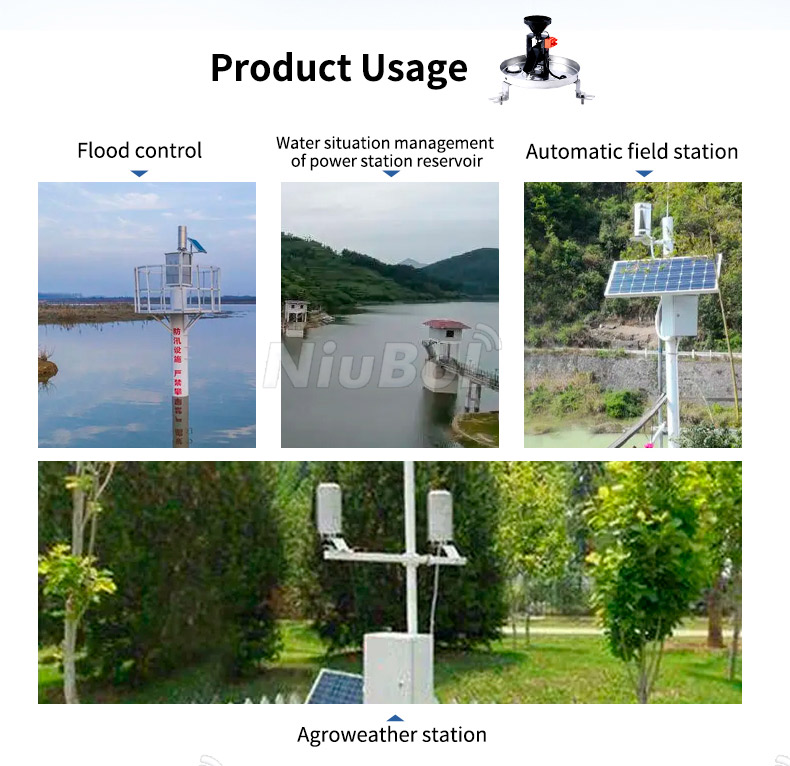

— Blogs —
—Products—
 Consumer hotline +8618073152920
Consumer hotline +8618073152920 WhatsApp:+8615367865107
Address:Room 102, District D, Houhu Industrial Park, Yuelu District, Changsha City, Hunan Province, China
Product knowledge
Time:2024-09-12 10:00:07 Popularity:990
A Rain Gauge Sensor, also known as a rain gauge, is an important instrument used by meteorologists and hydrologists to measure the amount of precipitation that falls in an area over a period of time. For snowfall measurements, a specialized snow gauge is used. There are many types of rain gauges, and according to the different measurement principles and structures, common rain gauges can be divided into siphon, tipping bucket, weighing, radar, ultrasonic, and photoelectric types. It is very important for the research and application of meteorology, hydrography, agricultural irrigation and other fields. Through the rain gauge, we can understand the distribution, intensity and frequency of precipitation, and then provide a scientific basis for flood control, drought early warning, water resource management and other aspects.
Rain gauge can be divided into the following categories:
1. Standard rain gauge: this is the most common one, usually consists of a funnel and a measuring cylinder.
2. Tipping bucket rain gauge: using a mechanical device, when the rain reaches a certain amount, the water in the funnel will be tipped into another container.
3. Weighing Rain Gauge: Measures the amount of precipitation by weighing the water.
4. Optical rain gauge: uses optical sensors to detect and count the number and size of raindrops.
5. Radar Rain Gauge: Measures the amount and distribution of precipitation through radar technology.
6. Siphon Rain Gauge: Rainwater enters from the upper end of the water bearer, is collected in the lower funnel and introduced into the float chamber. The float rises as the rainwater increases and drives a self-marking pen that plots the change in precipitation on a recording paper.
1. Structure: A standard rain gauge usually consists of a funnel and a measuring cylinder. The shape of the funnel is designed to receive as much precipitation as possible and direct it into the measuring cylinder.
2. Principle of operation:
- As rainwater passes through the funnel, it is directed into the measuring cylinder.
- The measuring cylinder is usually graduated to accurately measure the amount of rainwater collected.
- At the end of the rainfall, the amount of rainwater in the measuring cylinder is read and this is the amount of precipitation over a period of time.
3. Data processing: The amount of precipitation is usually measured in millimeters, which is calculated by measuring the depth of the water, not the volume of the water.

The siphon rain gauge is capable of continuously recording the amount of liquid precipitation and the number of hours of precipitation, while the intensity of precipitation can also be understood from the precipitation record. It mainly consists of water bearer, float chamber, self-recording clock and shell. The working principle is: rainwater from the upper end of the water bearer to enter the mouth, through the lower funnel collection into the float chamber. The float rises with the increase of rainwater and drives the self-marking pen to draw the change curve of precipitation on the recording paper. When the rainfall reaches a certain height, the siphon effect begins, the rapid discharge of rainwater into the float chamber of the water storage bottle, while the self-marking pen back down and restart recording.
Tipping bucket rain gauge by the sensor and the signal recorder, the sensor part includes the water receiver, the upper bucket, measuring bucket, counting bucket and reed switch. Its working principle is: rainwater into the water carrier, through the funnel into the tipping bucket. When the amount of water in the hopper reaches a certain height (such as 0.1 millimeters or 0.2 millimeters), the hopper due to gravity to flip, while triggering the reed switch to send a pulse signal to the recorder. The recorder records the rainfall accordingly and can measure the total precipitation by accumulating the pulse signals.
Weighing rain gauges continuously record the amount of precipitation by measuring the total weight of the rain catching cup and the precipitation inside it. It is usually equipped with a mechanical winding device or a counterbalance hammer system to accurately record and display changes in precipitation. This type of rain gauge can record not only liquid precipitation, but also snow, hail, and mixed rain and snow precipitation, and is suitable for a wide range of meteorological conditions.
5. Radar rain gauge
Radar rain gauge uses radar technology to measure the intensity and distribution of rainfall, to realize the monitoring of rainfall over a wide area. Its working principle is similar to that of weather radar, which detects the reflected signals of precipitation particles by transmitting and receiving electromagnetic waves, and then calculates the amount of precipitation. Radar rain gauge has the advantages of wide monitoring range, real-time and so on, and plays an important role in meteorological observation and disaster warning.
Photoelectric rain gauge through the photoelectric sensor to measure the number and size of raindrops, and then calculate the rainfall. Its working principle is: the use of photoelectric effect will be raindrops on the light blocking into electrical signals, and through the signal processing circuit to amplify and count the electrical signals. With the increase in the number of raindrops, the photoelectric sensor output signal is also enhanced, by measuring the strength of the signal can be deduced from the amount of precipitation. The photoelectric rain gauge has the advantages of fast response speed and accurate measurement, which is suitable for the occasions that need to obtain precipitation information quickly.

In summary, different types of rain gauges have their own unique working principle and scope of application, users can choose the right rain gauge for measurement according to specific needs. Rain gauges work on a simple yet effective principle, and they play a vital role in collecting and providing important meteorological data.
Each type of rain gauge has its own unique advantages and limitations. For example, funnel and tipping bucket rain gauges may not be accurate enough to measure short bursts of heavy rainfall because of their limited capacity, while optical rain gauges excel in sensitivity and immunity to interference. Choosing the right type of rain gauge needs to be determined by the specific application scenario and requirements.
NBL-W-ARS-Tipping-bucket-rain-gauge-instruction-manual.pdf
NBL-W-RS-Rain-sensors-instruction-manual-V4.0.pdf
NBL-W-DRS-Double-Tipping-Bucket-Rain-Sensor-Instruction-Manual.pdf
Related recommendations
Sensors & Weather Stations Catalog
Agriculture Sensors and Weather Stations Catalog-NiuBoL.pdf
Weather Stations Catalog-NiuBoL.pdf
Related products
 Combined air temperature and relative humidity sensor
Combined air temperature and relative humidity sensor Soil Moisture Temperature sensor for irrigation
Soil Moisture Temperature sensor for irrigation Soil pH sensor RS485 soil Testing instrument soil ph meter for agriculture
Soil pH sensor RS485 soil Testing instrument soil ph meter for agriculture Wind Speed sensor Output Modbus/RS485/Analog/0-5V/4-20mA
Wind Speed sensor Output Modbus/RS485/Analog/0-5V/4-20mA Tipping bucket rain gauge for weather monitoring auto rainfall sensor RS485/Outdoor/stainless steel
Tipping bucket rain gauge for weather monitoring auto rainfall sensor RS485/Outdoor/stainless steel Pyranometer Solar Radiation Sensor 4-20mA/RS485
Pyranometer Solar Radiation Sensor 4-20mA/RS485
Screenshot, WhatsApp to identify the QR code
WhatsApp number:+8615367865107
(Click on WhatsApp to copy and add friends)